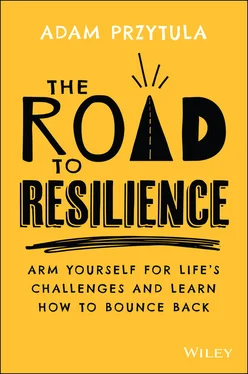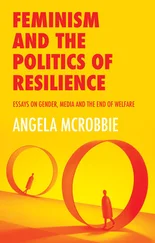At first, running provided me with the sense of value that I was desperately seeking. Then, in Year 4, I had to start taking steroids to treat eczema on my feet (yep, I was on the 'roids at the tender age of nine). Pretty rapidly I stacked on the KGs. The steroids made me supersized. I'd stand on the track at school, acutely aware of my belly beneath the tightly stretched fabric of my green faction t‐shirt (go green!). It felt like everyone was laughing at me. As I took off, I felt my belly jiggle and I'd see other kids overtake me. Passing the finish line, puffing, I'd feel ashamed. I lost the title of Champion Boy. I started finishing second … third … then fourth. By Year 7 I'd dropped to the B Division in sports. I wasn't any good at running anymore.
So, I just gave up.
My long, painful downward spiral
In Star Wars (I love Star Wars), Master Yoda explains, ‘Fear leads to anger; anger leads to hate; and hate leads to suffering’. This was me. From Year 4 until Year 7 I became more and more afraid of losing my sporting ability because it was the only thing that made me feel good about myself. In Year 4, I started getting bullied. By the time I reached Year 7, the kids who were supposed to be my friends beat me up instead, leaving my confidence in tatters. (I'll share this story with you later in the book.)
I went into Year 8 (the first year of high school in Western Australia at the time) with my self‐esteem having spiralled to an all‐time low. I had completely stopped trying at school. I hated myself, and it was really painful.
No‐one ever told me that it was okay to feel things. I didn't know that our emotions are a really important part of who we are. I don't blame my parents because they didn't know any differently and they acted in ways that tended to be ‘normal’ for their generation: ignoring negative feelings or reacting with anger. I grew up thinking this was normal. I thought I had to push down my anger and push away my negative feelings and pretend they weren't there. This had a huge impact on my self‐esteem.
How do you improve your self‐esteem?
Just remember, if you're struggling with low self‐esteem, it's not your fault. It's not because you are a ‘bad person’. It's not because you were born with the self‐esteem ‘part’ of you missing.
If you have low self‐esteem, it means that, right at this moment in time, you aren't feeling too crash hot about yourself. And that's okay! Self‐esteem is something we can work on and improve.
As humans, I believe we are born with two ingrained psychological needs: we need to feel loved, and we need to feel like we belong.
If we don't get these needs met (at home and at school) when we're growing up, it can be really hard to develop healthy self‐esteem. When I was a kid, I didn't understand why I felt angry all the time. Although I knew Mum and Dad loved me, it didn't feel like I was part of a loving family because of all the fighting going on. When I was getting bullied at school, I thought it was because there was something wrong with me. I thought I was an outcast, a freak. I didn't feel loved, or like I belonged, at home or at school. Now I realise that I wasn't unique. Lots of other students go through similar things to what I went through, and far worse. Resilience is about being able to bounce back from the problems we face, and if we don't feel valuable, it's impossible to overcome life's challenges.
So, how do we start working on improving our self‐esteem? Here are some tools you can use to help build your self‐esteem:
Change the way you think.
Be self‐aware.
Choose your friends and relationships wisely.
Be grateful.
Talk to someone.
Change your lifestyle.
Let's take a look at each of these tools in more detail.
The human mind does one heck of a lot of thinking. Some psychologists suggest that the average human brain has up to 60 000 thoughts a day! But hang on — 95 per cent or so of these thoughts are actually the same ones we had the day before. What's more, around 85 per cent are negative thoughts. These thoughts seem to pop up out of the blue. But why do we have them?
If you're interested in psychology, or if you've studied it at school, you might have heard of a famous psychiatrist called Dr Aaron Beck. He's known as the father of cognitive behavioural therapy (CBT). In the 1960s, Dr Beck spent a lot of time working with patients who were experiencing symptoms of depression. Dr Beck noticed that his patients were experiencing repetitive thoughts such as:
‘I'm not good enough’
‘I always fail’
‘I'm such an idiot’.
Dr Beck called these ‘Automatic Negative Thoughts’. He became convinced that Automatic Negative Thoughts affected his patients’ happiness and confidence, and contributed to their depression.
WHAT ARE AUTOMATIC NEGATIVE THOUGHTS (ANTS)?
Automatic Negative Thoughts are also known as ‘ANTs’. The thing is, we all have ANTs. It's normal. Our brains are wired to think negatively because ANTs exist to keep us safe. How so? In prehistoric times, our ancestors relied on negative thoughts for their survival. Random thoughts helped keep them alive. For example:
‘Don't eat that — it might be poisonous!’
‘What's that noise? I'm being hunted!’
However, ANTs aren't nearly as useful for those of us who are living a fairly cosy existence in the twenty‐first century. We might be trying to shoot a goal in basketball when a thought pops up: Don't shoot — you'll miss! or What's that whispering? My teammates are laughing at me . These ANTs don't help us to survive. In fact, they often prime us for failure.
The tricky thing about ANTs is that they often come from deep beliefs we have about life. Often, ANTs seem so true that we don't notice when we're having one, and we don't stop to question it. Instead, we just start feeling bad about ourselves without really knowing why. So how do we overcome ANTs?
HOW TO MASTER YOUR THOUGHTS
Your brain is a muscle. Just like any other muscle in your body, it needs exercise. Instead of running, jumping or dancing for exercise, your brain gets a workout by thinking . Each time you have a thought, a different neural pathway in your brain is exercised. The more ‘reps’ you do of this thought, the stronger the neural pathway becomes. If you do a hundred bicep curls every day, you'll notice your biceps getting bigger (and at first, really sore). Similarly, if you think, ‘I'm stupid’ one hundred times every day, the neural pathway associated with that thought grows stronger. The thought becomes more ingrained, more believable and more automatic.
Instead of letting ANTs happen, you can choose to be aware of your thoughts by using your feelings as a cue. How?
First, if you start to feel down, try to identify the thought that caused this.
Second, challenge the thought. Ask yourself, ‘Is this thought true?’ Just because your mind is telling you something, it doesn't automatically make it fact.
A few years ago, I was playing in a really good basketball team. It was halfway through the season and we'd won every match. We'd also won the previous season. One night, I was driving home when an ANT popped up in my mind: We scored 85 points tonight, but I only scored four. I must be ‘That Guy’ (the guy no‐one wants to pass the ball to because he’ll mess up and ruin the game) . The thought seemed to come out of nowhere, but I challenged it: You’re having an ANT. Just because you’re thinking something, it doesn’t make it true.
Читать дальше












